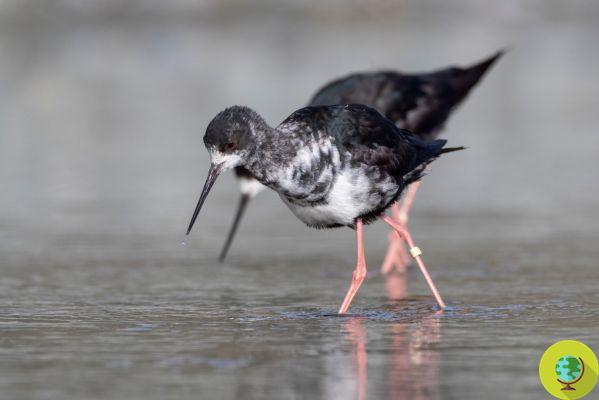
Good news from New Zealand: the latest kakī count, the so-called black knight, is showing a 31% increase in the species.
Exciting and encouraging news comes from New Zealand: the latest kakī count, the so-called black knight, is showing a 31% increase in the species. Currently there are 169 of these birds called kakī by the Maori and it is the highest number ever obtained in the last forty years.
To announce it on social networks is the Kakī Recovery Programme that through various organizations is working to increase the population of the black stilt (Himantopus novaezelandiae) or kakī. Te Manahuna Aoraki together with Global Wildlife Conservation has long been funding a program to avoid the extinction of the species that reproduces in New Zealand and is not migratory. The wildlife conservation process is arduous, but it is bearing fruit through reproduction and reintegration into the wild. There are indeed new broods, which could mean the release of 60 birds into the wild.
We are pretty excited to share two pieces of good news for kakī!Firstly a population increase of 31% in the past year,…
Posted by Kakī Recovery Programme on Saturday, May 23, 2020
"New Zealand's commitment to reversing the decline and extinction of native species demonstrates leadership in biodiversity conservation," said Wes Sechrest, chief scientist and CEO of GWC.
The kakīs as we know, are found only in New Zealand, where the Maori consider the bird as a kind of 'taonga' or a living treasure. Adult birds have black plumage and long pink-red legs. In addition to predators, they are forced to deal with the destruction of their natural habitat in the Mackenzie Basin of the South Island. For this reason, the kakīs are a key species for the recovery of native fauna and flora.
These birds were once in abundance, but the introduction of non-native predators, including ferrets, cats and feral rats, has decimated the population., leaving only 23 adults and four couples breeding in the wild in 1981.
The Te Manahuna Aoraki project is helping to ensure that the birds that are part of the conservation breeding program have a safer environment so that they can be released back into the wild.
We have been caring for a gorgeous juvenile Kaki/Black Stilt the past few weeks. It has had to have two surgeries to…
Posted by The Wildlife Hospital – Dunedin on Tuesday, June 23, 2020
“Thanks to the effort of the involved team from the Department of Conservation and the incredible support of partner organizations, there are 40 more adult birds living and breeding in the wild compared to last year,” said Conservation Minister Eugenie Sage.
The DOC currently treats 116 chicks and 11 adult kakīs. This season, the eggs of three nesting pairs in their structures and 26 wild nesting pairs were collected.
Then they artificially incubated the kaki and raised the young chicks, which were held over the winter and released into the wild at nine months.
Anne Richardson ICWT Wildlife Manager, has been awarded an Officer of the New Zealand Order of Merit for Services to…
Posted by The Isaac Conservation and Wildlife Trust on Monday, June 1, 2020
“With these impressive efforts, we hope to see kakis in the wild and come out of the brink of extinction,” Sechrest says.
Sources: Global wildlife.org/ Kakī Recovery Program / hdoc.govt.nz
- The sixth mass extinction is faster and faster: the study
- At risk of extinction as many as 600 species of animals more than expected. I study
- This taxi driver "gives a lift" to the tender chicks of seabirds, when they confuse the asphalt with the sea


























